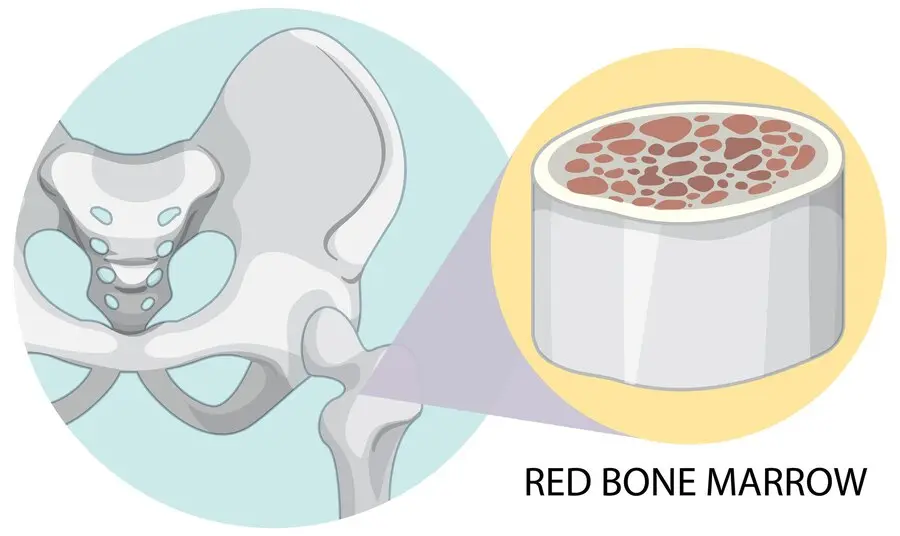Preventive Healthcare
What is Bone Marrow Biopsy: Procedure and Results

Table of Contents
- What Is a Bone Marrow Biopsy?
- What Is Bone Marrow?
- When Would a Doctor Order a Bone Marrow Biopsy?
- What Conditions and Diseases Are Diagnosed with a Bone Marrow Biopsy?
- Who Performs a Bone Marrow Biopsy?
- How Can I Prepare for a Bone Marrow Biopsy?
- What Should I Expect During a Bone Marrow Biopsy?
- Steps for Bone Marrow Biopsy
- How Painful Is a Bone Marrow Biopsy?
- What Should I Expect After a Bone Marrow Biopsy?
- Are There Risks to a Bone Marrow Biopsy?
- What Type of Results Do You Get, and What Do the Results Mean?
- Conclusion
What Is a Bone Marrow Biopsy?
A bone marrow test, also known as bone marrow biopsy, is a procedure used to diagnose any condition affecting your bone marrow or blood. Your bone marrow is where the blood cells of your body are made, which is why it is one of the best samples to use while looking for signs of blood-related diseases.
During the bone marrow biopsy, the healthcare professional will take a small sample of marrow from your bone; afterwards, a pathologist will examine the sample under a microscope for any signs of the suspected disease. Many doctors use a bone marrow test to confirm some cancers and different blood diseases.
What Is Bone Marrow?
Bone marrow is located in the hollow part of more giant bones. It consists of a liquid and sponge-like tissue that is soft to the touch.
The soft tissue in the bone marrow helps produce three significant components of our blood namely:
- Red Blood Cells (RBCs): That helps carry oxygen to other parts of our body.
- White Blood Cells (WBCs): The protector cells that help fight diseases.
- Platelets: The cells that help in blood clotting and stop bleeding whenever there is any damage to your blood vessels.
The liquid in the bone marrow usually contains stem cells or maturing blood cells, making the required vitamins like Vitamin D needed for cell production.
The bone marrow biopsy test is only used to test the tissue part of the bone marrow, whereas the liquid part is tested using a different procedure known as the bone marrow aspiration test.
When Would a Doctor Order a Bone Marrow Biopsy?
Your doctor is most likely to order a bone marrow test when he wants to:
- Evaluate or diagnose your condition: A bone marrow biopsy helps to understand any abnormalities in your blood cells. This can help your healthcare provider diagnose blood disorders such as cancers, other infections and unexplained fevers.
- Stage Cancer: Cancer staging helps doctors understand how your cancer has progressed. A bone marrow test tells them whether cancer has been spread to the bone marrow or if the tumour present in your bone marrow is growing.
- Monitor your treatment progress: Bone marrow blood tests can also help your doctor understand if the planned treatment is working or if you need to change the plan. It also allows doctors to understand if your bone marrow is producing enough blood cells after you have received the correct treatment.
A bone marrow density test is also used to determine how compatible the donor cells are in the case of an allogeneic stem cell transplant. If an individual has too few healthy blood cells, they may need a donor to provide healthy stem cells, but the cells from the donor and recipient must match.
What Conditions and Diseases Are Diagnosed with a Bone Marrow Biopsy?
Any condition that involves too many or too few blood cells can be diagnosed with the help of a bone marrow test, which includes the following:
- Bone marrow test for anaemia: Anaemia is when your body does not have enough red blood cells to carry oxygen. Aplastic anaemia, a condition where your bone marrow does not produce enough RBCs, WBCs and platelets, can also be tested with the help of this test.
- Leukopenia and leukocytosis: Conditions in which the body contains too few white blood cells
- Thrombocytopenia and thrombocytosis: Bone marrow tests for low platelets or too many platelets help diagnose these conditions.
- Polycythemia vera: This kind of rare blood cancer can cause your bone marrow to produce excess red blood cells.
- Leukaemia: This type of blood cancer leads to abnormal blood cells, especially WBCs.
- Lymphoma: Lymphatic cancer that leads to an abnormal number of WBCs and RBCs.
- Multiple myeloma: This is another kind of rare blood cancer that can harm plasma cells
- Secondary cancers: A bone marrow density test can be used to test for secondary cancers like breast or lung cancer that may have spread to your bone marrow.
- Myelofibrosis: This condition involves the replacement of bone marrow with fibrous scar tissue.
- Myelodysplastic syndrome: This is a bone marrow disorder that does not allow the stem cells in the body to mature correctly.
A bone marrow test can also help detect chromosome abnormalities and nutritional or vitamin deficiencies that cause the production of misshapen or large RBCs.
Who Performs a Bone Marrow Biopsy?
A haematologist (blood disorder specialist) or oncologist (cancer specialist) performs bone marrow biopsies. A nurse specially trained for the purpose could also help perform this test.
How Can I Prepare for a Bone Marrow Biopsy?
Before the bone marrow test is carried out, your healthcare provider will instruct you about the necessary preparations that may be needed for the test. Some steps may include taking a sedative to help reduce the pain on the day of the procedure if you need to fast the night before. Suppose you need someone to drive you home after the process is completed.
During this time, you must also give your healthcare provider detailed information about any medical history or current medications you may be taking. Here is some vital information your doctor needs to know before carrying out the procedure:
- If you have a history of haemophilia or bleeding disorders
- If you are taking medication that thin your blood
- If you are taking vitamins or supplements
- If you are taking any allergy medicines
- If you are pregnant
What Should I Expect During a Bone Marrow Biopsy?
The bone marrow density test can be done in a hospital or your healthcare provider's office. This procedure takes about 30 minutes, and you will be awake the entire time. Your doctor will numb the test site with local anaesthesia to ensure you are comfortable before conducting the test.
Steps for Bone Marrow Biopsy
- Depending on the biopsy site, your doctor will ask you to lie on your belly or side. A sample is commonly taken from the back of the hip bone, known as the posterior iliac crest.
- The doctor will then clean the skin with the help of an antiseptic and inject a kind of numbing medication onto the surface of the bone.
- A small incision is made at the side, and a special biopsy needle is inserted into the bone. With the help of a small syringe attached to the needle, the liquid in your bone marrow is removed. This process is called bone marrow aspiration.
- Next, a needle with a hollowed-out centre is inserted, which collects a small piece of your marrow. This process is called core biopsy because the hand removes a cylindrical-shaped core tissue sample.
- The needle is removed, and pressure is applied to the site to stop bleeding before the wound is bandaged.
- The collected sample is then sent to the lab for further processing.
How Painful Is a Bone Marrow Biopsy?
As bone cannot be numbed, you may feel slight pressure while pushing in and pulling out of the needles and samples, which can cause discomfort. Other than that, you may also feel a sharp sting during the bone marrow aspiration and a dull, brief pain during the removal of the core biopsy.
You can talk to your healthcare provider about the expected pain during this procedure and solutions that help numb the site to be more comfortable during the entire process.
What Should I Expect After a Bone Marrow Biopsy?
Most often, you are allowed to go home on the same day as the procedure. If you choose to be sedated during the process, you may need to ask someone else to drive you home. Ensure you follow all the instructions your healthcare provider provides so you give yourself the correct care and have a speedy bone marrow biopsy recovery.
Care tips for better recovery include the following:
- Avoid strenuous physical exercise for 24 hours after the procedure.
- Keep the wound dry for a minimum of 24 hours.
- Take a pain reliever to help with the residual discomfort and pain.
Are There Risks to a Bone Marrow Biopsy?
A bone marrow biopsy is a relatively risk-free procedure; however, there have been complications like heavy bleeding and infections at the side of the biopsy. The excess bleeding usually stops by applying pressure to the wound, while your doctor could prescribe an antibiotic cream for any infection.
What Type of Results Do You Get, and What Do the Results Mean?
After the specialist has analysed your bone marrow sample under the microscope, they will send the results to you or, in some cases, directly to your healthcare provider. The doctor will review the findings and use the bone marrow biopsy to create a treatment plan for you.
They may order additional tests to confirm your diagnosis or to recommend or adjust the treatments depending on your results.
Conclusion
A bone marrow test helps identify diseases related to the blood and the creation of blood components. Few specialist labs provide such advanced tests. Talk to your healthcare provider about your options to conduct the test and what the results mean for you.
Metropolis offers diagnostic labs across India that provide accurate blood testing and health check-up services. The reports are shared online via email and the Metropolis TruHealth app. Contact Metropolis Labs today for more information about this or other advanced testing services.


























